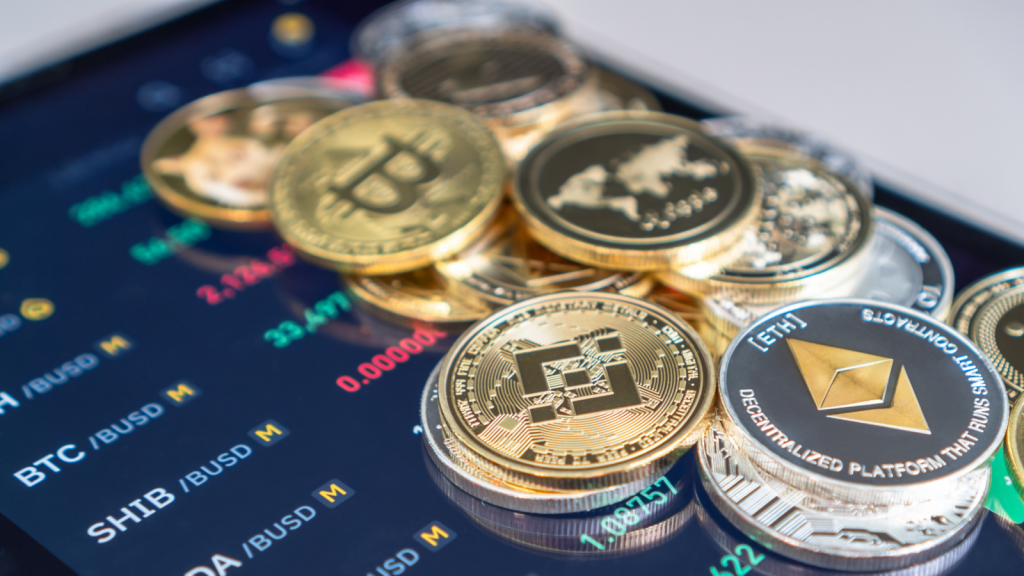The 3 best cryptos to buy now as Bitcoin and Ethereum hit new highs

Cryptocurrencies have become popular in recent years. With Bitcoin (BTC-USD) and Ethereum (ETH-USD) is reaching new highs, investors are increasingly interested in identifying the best cryptos to buy. The sentiment is in stark contrast to 2022, when the crypto market experienced a steep decline. However, it now appears that the crypto winter may soon be over.
In particular, the New York-based investment bank HC Wainwright has given a “buy” rating on Coin base (NASDAQ:COIN), the largest cryptocurrency exchange in the United States. The ranking comes despite the recent high degree of regulation imposed on the industry.
According to the bank, the company is in a good position to profit from the explosive growth of the worldwide digital asset economy as the downturn known as the “crypto winter” comes to an end.
The investment bank’s view is shared by other key players in the industry, according to a report by Standard Chartered analyst Geoff Kendrick on Monday.
According to Kendrick, the recent failures of medium-sized financial institutions in the United States, such as Silicon Valley Bank (OTCMKTS:SIVBQ), is helping to make the case for Bitcoin.
In addition, he points to the stabilization of risk assets and rumors of further monetary easing from the Federal Reserve, potentially paving the way for Bitcoin to reach the $100,000 mark.
However, cryptocurrencies are intimidating, especially for those new to the space. Despite the recent positive momentum, not everyone is comfortable trading crypto. With so many digital assets, it can’t be easy to know which ones to buy.
That’s where this list comes in handy.
And when you’re done with this list, check out these two articles. They offer more advice from my side for those looking to navigate the tricky waters of crypto. When you’re done with those, check out this more comprehensive list from my colleague Josh.
Good luck investing!
Cardano (ADA-USD)

Source: Stanslavs / Shutterstock
Charles Hoskinson, a co-founder of Ethereum, established Cardano (ADA-USD) as a proof-of-stake blockchain in 2017. Blockchain prioritizes energy efficiency and is a developer-friendly ecosystem for decentralized applications (dapps).
Cardano’s Ouroboros proof-of-stake algorithm provides more mining power based on coin ownership. POS is a less risky alternative to proof-of-work. Cardano aims to improve Bitcoin and Ethereum, addressing issues such as POW.
Considered one of the most sophisticated blockchains, Cardano can handle up to a million transactions per second due to its speed and technological advancements.
Cardano can be understood by breaking it down into layers. Transactions have two components: the sending of tokens and the conditions. The settlement layer makes it possible to send and receive ADA coins. The calculation layer makes it possible to create and enter smart contracts.
Due to energy efficiency, Cardano’s smaller footprint appeals to investors for faster and cheaper transactions. In 2021, a hard fork enabled smart contract deployment, and a Vasil hard fork in September 2022 aims to improve scalability.
AdaSwap, a Cardano platform for decentralized finance apps, recently launched a test version. AdaSwap can improve Cardano’s Web3 network status and increase coin value.
According to CoinDesk data, ADA, the native token for Cardano, is up nearly 66% this year. As the crypto winter recedes, the time to take advantage is now.
Polka Dot (DOT-USD)

Source: Zeedign.com / Shutterstock.com
Polka dot (DOT-USD) is a blockchain interoperability protocol. It connects different chains, exchanges data and processes transactions for parachains securely. Polkadot’s security also enables developers to create their blockchains.
Ethereum core founder Gavin Wood created Polkadot with a constantly circulating token supply. Polkadot is a growing cryptocurrency, threatening high profile coins like Ethereum and gaining popularity. Despite this, Bitcoin remains at the top of the list.
Polkadot’s native token operates on the blockchain, storing data as a permanent, uneditable record. The blockchain ensures transparency and decentralization, making it more secure than a single bank or entity’s control.
Polkadot is seen as a breakthrough for blockchain technology, with scalability and growth potential.
Developers released a roadmap for scalability, parachain development, cross-chain communication and more, which increases growth and value.
Polkadot’s interactivity attracts investors with the ability to connect and create blockchains. The developers’ interest catches the investors’ attention.
Bitcoin and Ethereum’s value requires buying fractional coins, while Polkadot at under $6 is cheaper and more tempting.
Chainlink (LINK-USD)

Source: Stanslavs / Shutterstock.com
Chain link (LINK-USD) is a decentralized oracle network that provides input on external data sources. Smart contracts help it respond to input, which Bitcoin and older blockchains struggle with.
Chainlink launched on Ethereum, but is blockchain agnostic, able to work with other blockchains. Its role in the real implementation of blockchain technology is significant.
The blockchain is secure for transactions, but cannot take input from off-chain sources. Decentralized oracles, such as Chainlink, can provide smart contract inputs from off-chain data such as fiat currencies, weather and sports scores.
Smart contracts respond to input. Bitcoin processes a limited range of inputs, while Ethereum supports programmable smart contracts.
Like Bitcoin and Ethereum, Chainlink’s native token LINK is used to finance project growth and acts as an incentive for users to participate in mining.
The LINK token was introduced in 2017 and remained below $1 until 2019. Then the price increased from below $2 in 2020 to $36 in February 2021. However, the value of LINK has since fallen from its peak and has yet to recover to that level.
On the bright side, recent price momentum is solid. The LINK token has risen almost 30% since the start of the year. Despite the increase, the token is still trading at a reasonable price that you can jump on.
At the date of publication, Faizan Farooque did not hold (directly or indirectly) any positions in the securities mentioned in this article. The opinions expressed in this article are those of the author, subject to the InvestorPlace.com Publishing Guidelines.

























